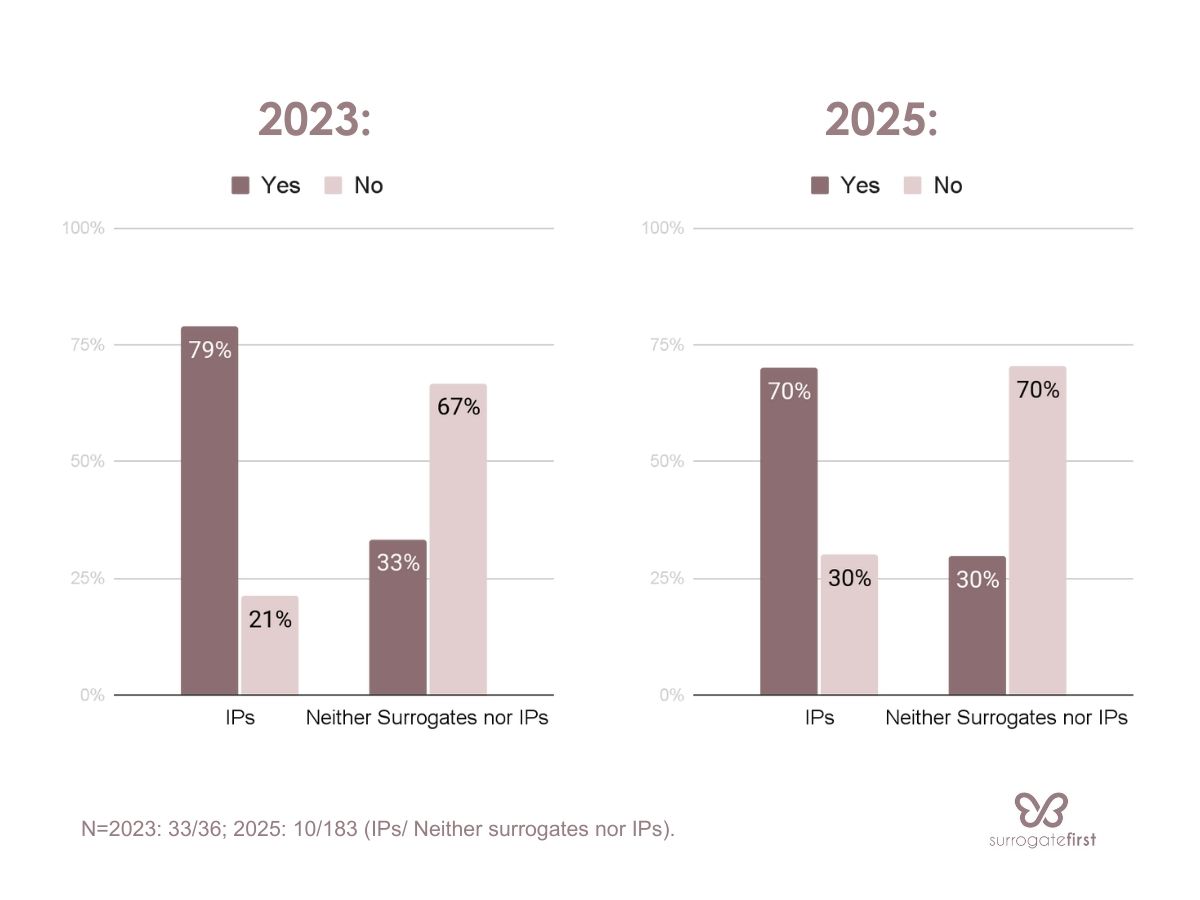


In 2023, 11% of respondents from the general audience reported knowing a friend or family member who had successfully completed a surrogacy journey. By 2025, 17% said they knew someone who had used surrogacy.

Intended Parents pursuing surrogacy tend to have higher incomes ($235,000) compared to the broader population. Placing them in the upper middle class of American wage earners.
The total cost of surrogacy creates a financial barrier and limits access to the services needed to pursue family building to those who don’t have financial support.
2023 vs 2025: The average household income increased for both categories, with the trend of higher incomes among IPs remaining consistent.
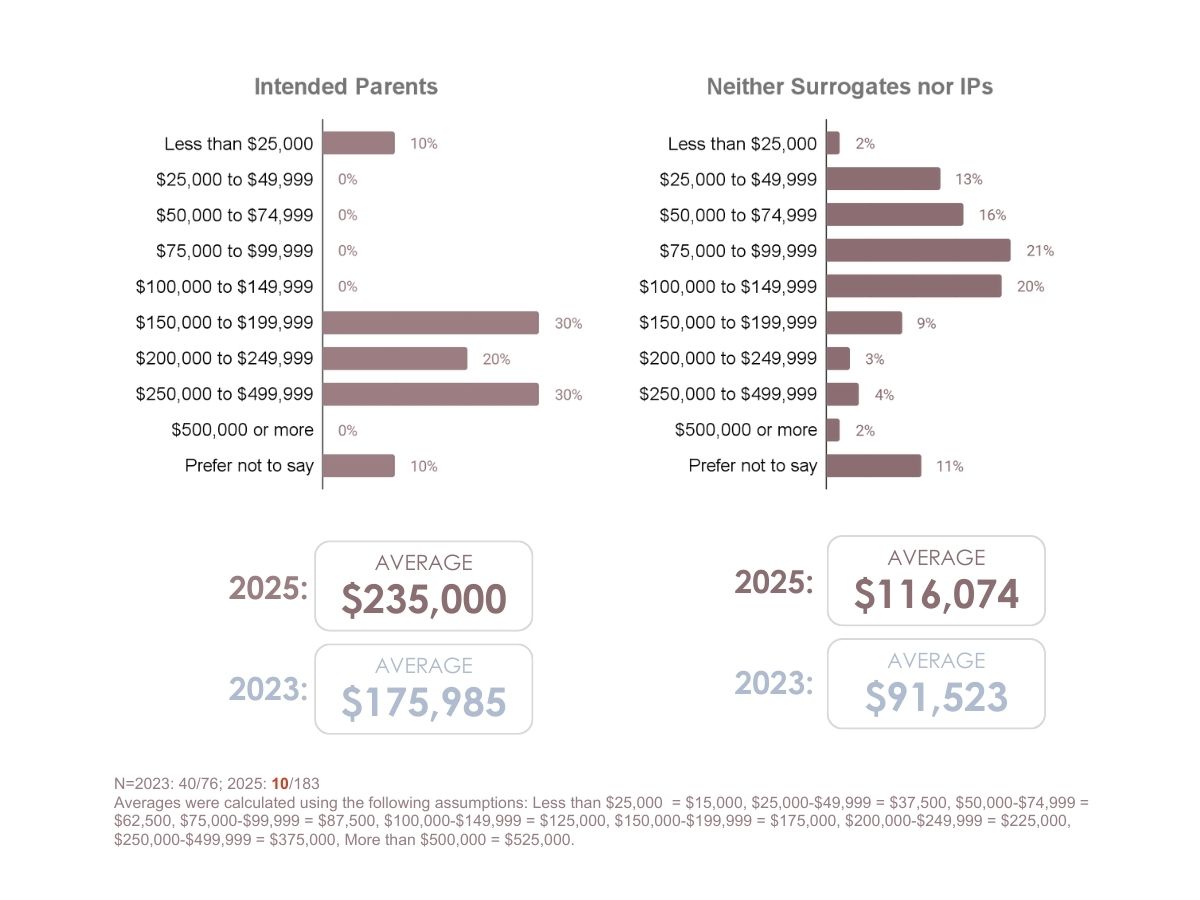
40% of IPs and 5% of general public respondents have their IVF, infertility, or surrogacy expenses covered by their employer.
This reflects the recognition of the importance infertility benefits have become to employee satisfaction and expectations.
2023 vs 2025: In 2025, 40% of surveyed IPs said their organisations insurance plan covers IVF, infertility, surrogacy costs compared to 32% in 2023.
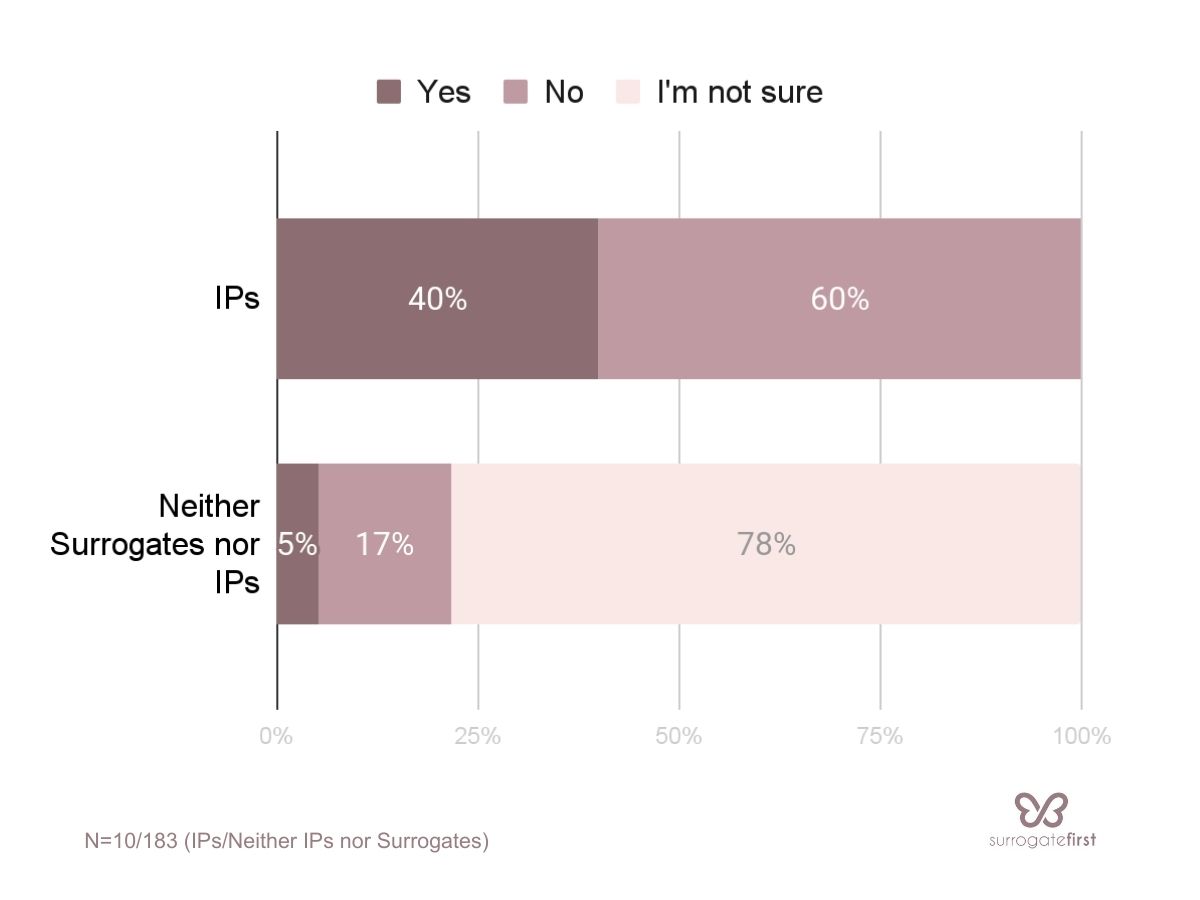
On average, employers are providing $11,000 in health insurance coverage and benefits to their employees for infertility related services.
Intended parents receive slightly higher coverage ($11,250) for IVF, infertility, or surrogacy costs compared to individuals who are not engaged in surrogacy.
2023 vs 2025: The average health insurance coverage for infertility remained consistent. The gap in coverage between IPs and the general public in 2025 is less pronounced compared to 2023.
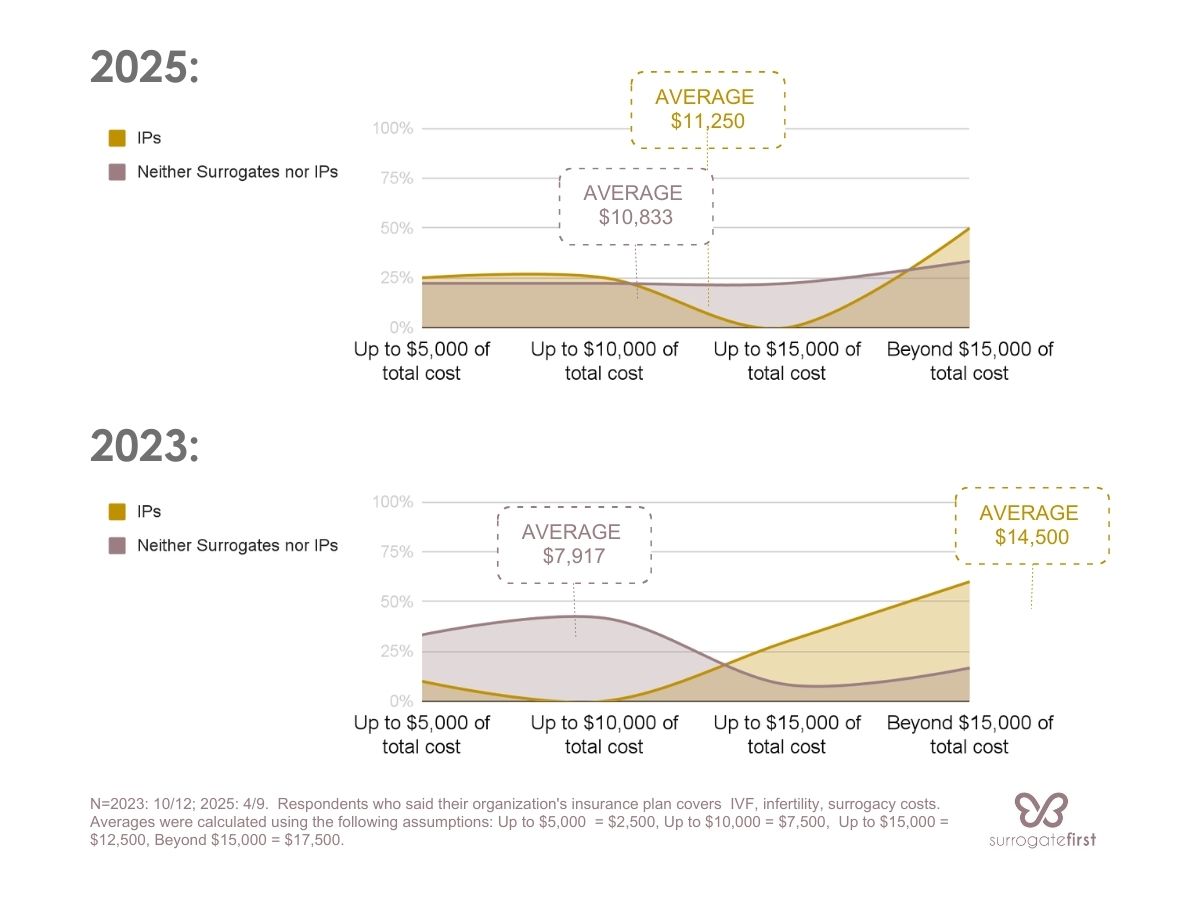
Intended parents would pay a higher premium for a health insurance plan to cover surrogacy, while people who do not intend to have a child through surrogacy would rather not.
Companies should consider offering additional health coverage plans to employees to manage their future family building plans.
2023 vs 2025: The trend remains consistent across years, although the willingness to pay more has declined for both groups since 2023. Read the 2023 results here.
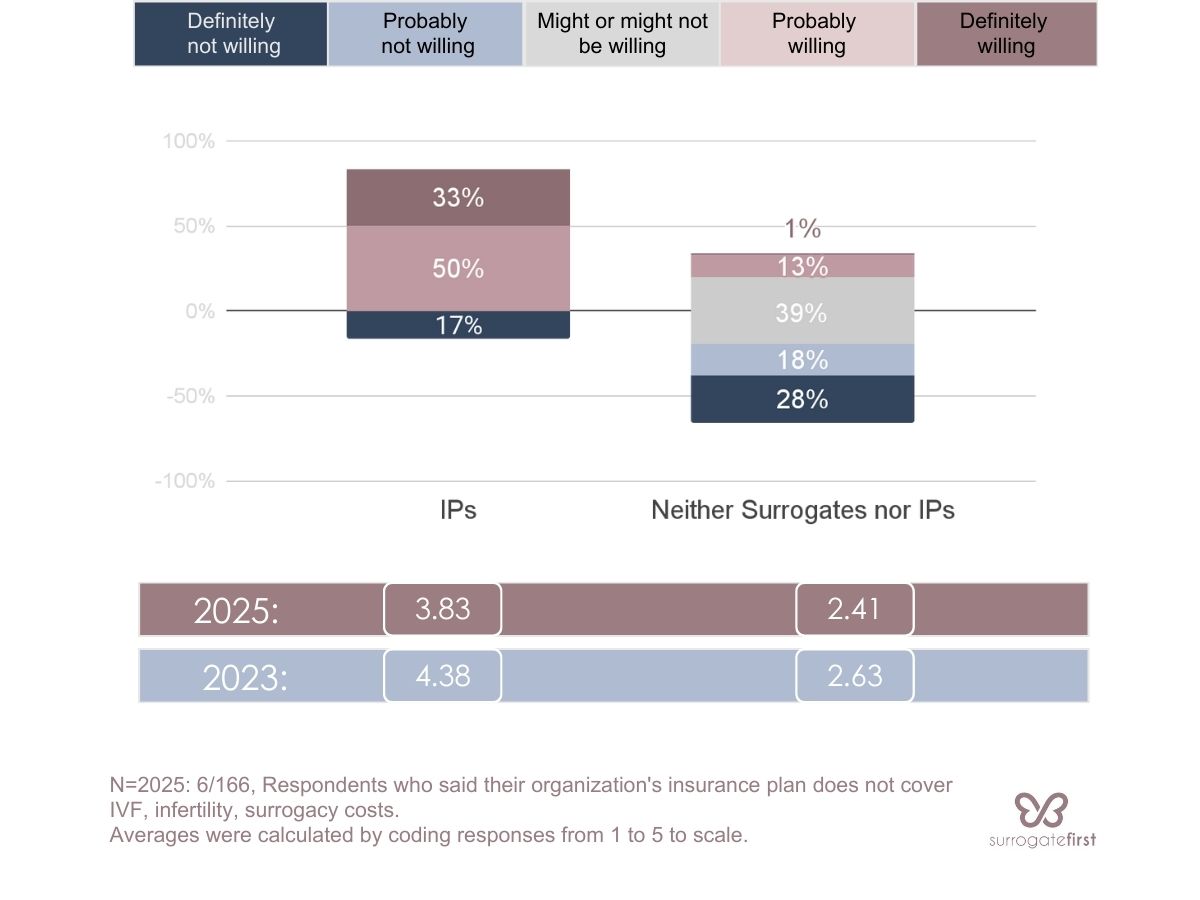
2023 vs 2025: The trend remains consistent across years.
Most respondents (90% of IPs and 51% of general population), support legislation that requires companies to provide health insurance coverage for the diagnosis and treatment of infertility and fertility services.
Particularly, intended parents are 76% more likely to support such legislation compared to the general population.
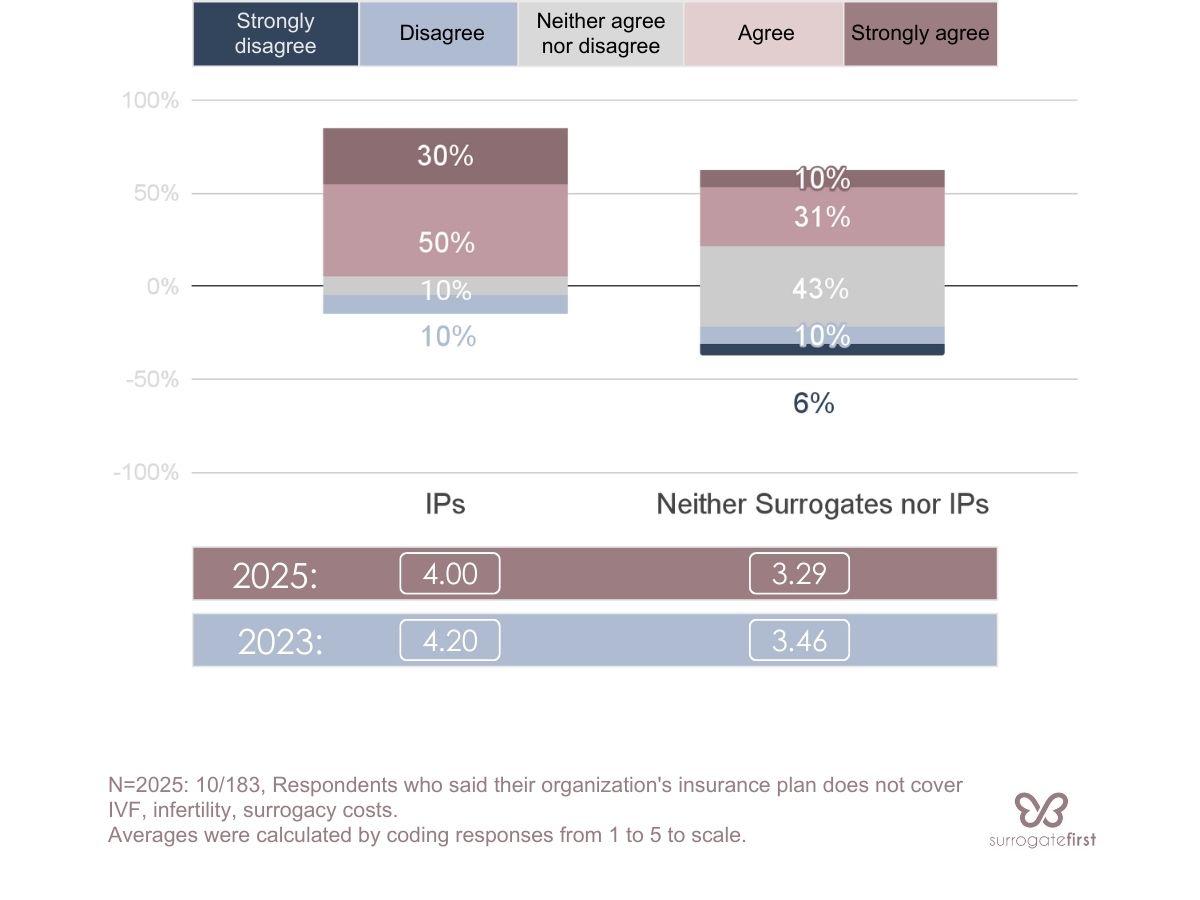
2023 vs 2025: The trend remains consistent across years.
Intended parents believe it is very or extremely important (70%) for their employers to provide infertility & surrogacy coverage in terms of their job satisfaction and loyalty.
In contrast, for those who do not plan to have a child through surrogacy, this benefit is 367% less important, being rated as “not at all important” or “slightly important” (52%).
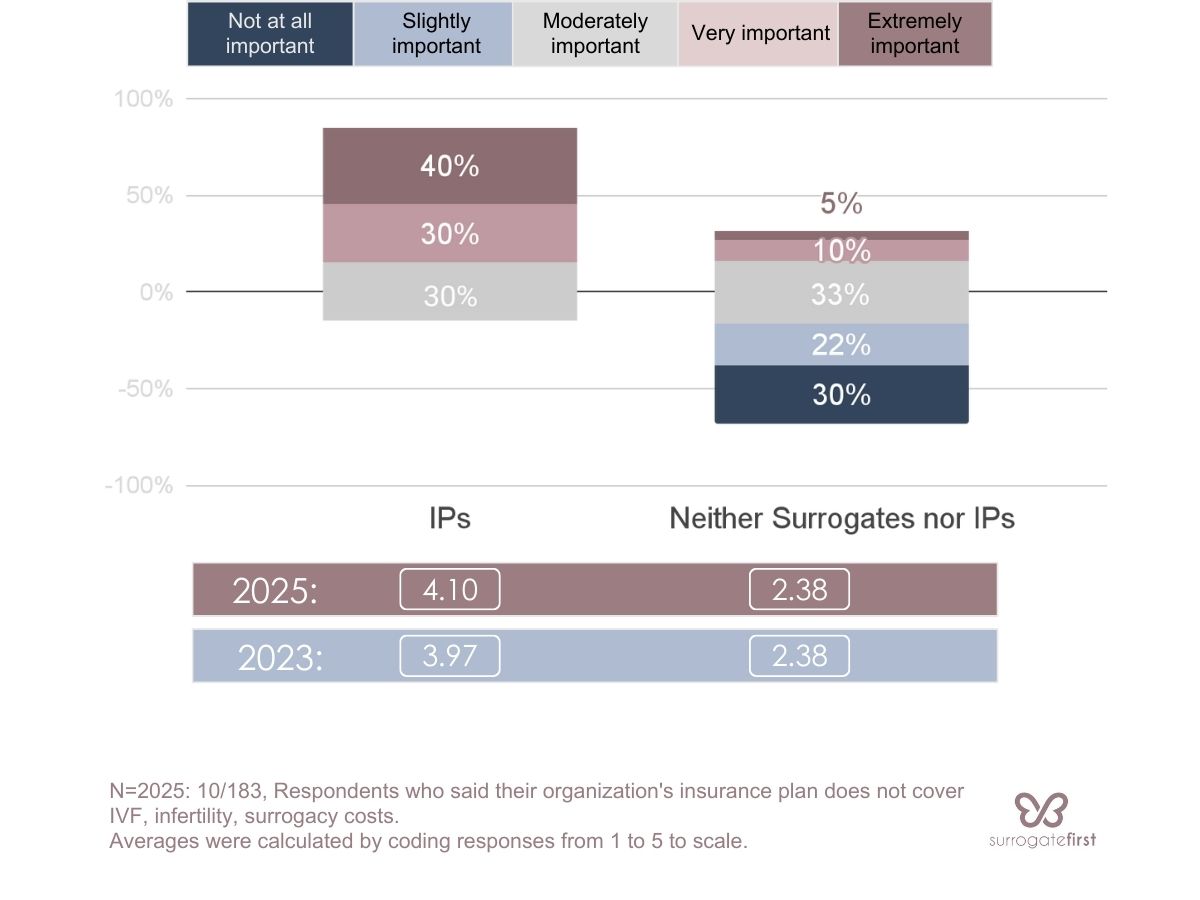
2023 vs 2025: The trend remains consistent across years.
IPs are not satisfied with policies and support for infertility benefits to employees, with 40% saying current support policies and support are “poor” or “very poor.”
Intended parents were 208% more likely to rate their employer’s policies as “poor” or “very poor” compared to others.
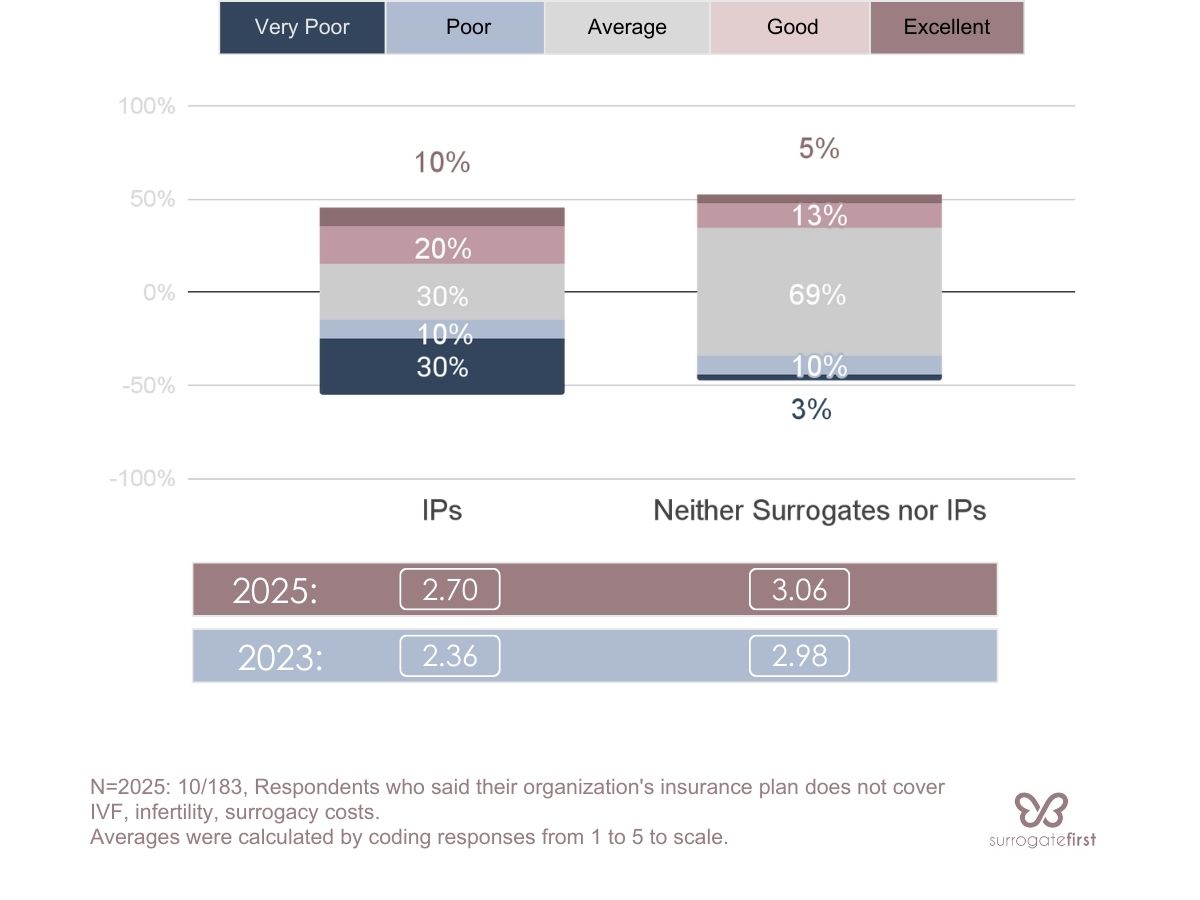
2023 vs 2025: The trend remains consistent across years.
Intended parents also agree that employers should offer additional support or benefits to employees pursuing IVF, surrogacy and adoption, expressing this opinion 95% more frequently than people from the general population.
General audience is often not decided (neither agree nor disagree, 43%) that employers should offer additional support.

2023 vs 2025: The trend remains consistent across years.
Intended parents also agree that employers should offer additional support or benefits to employees pursuing IVF, surrogacy and adoption, expressing this opinion 95% more frequently than people from the general population.
General audience is often not decided (neither agree nor disagree, 43%) that employers should offer additional support.

2023 vs 2025: The trend remains consistent across years.
90% of IPs would be inclined to stay with a company that provided comprehensive infertility benefits.
Intended parents are more likely to stay with a company that provides coverage for IVF, surrogacy, and adoption, while individuals from the general population were 550% more frequently neutral on this matter.
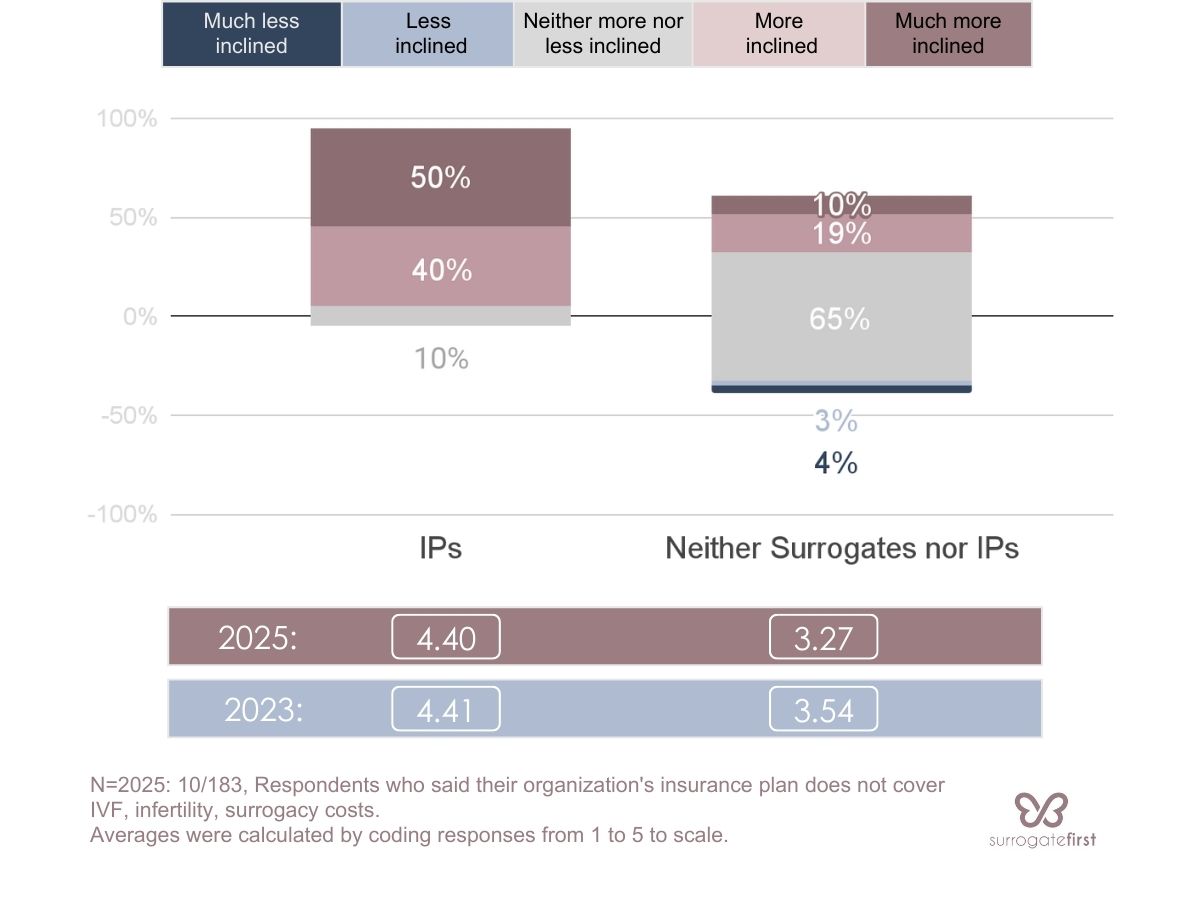
2023 vs 2025: The trend remains consistent across years.
In 2025, intended parents would be 133% more inclined to change jobs if a new employer offered significantly more extensive coverage for infertility and surrogacy.
Companies need to be aware and proactive in retaining key talent that are likely to experience infertility and family creation challenges with strong health coverage plan options.
